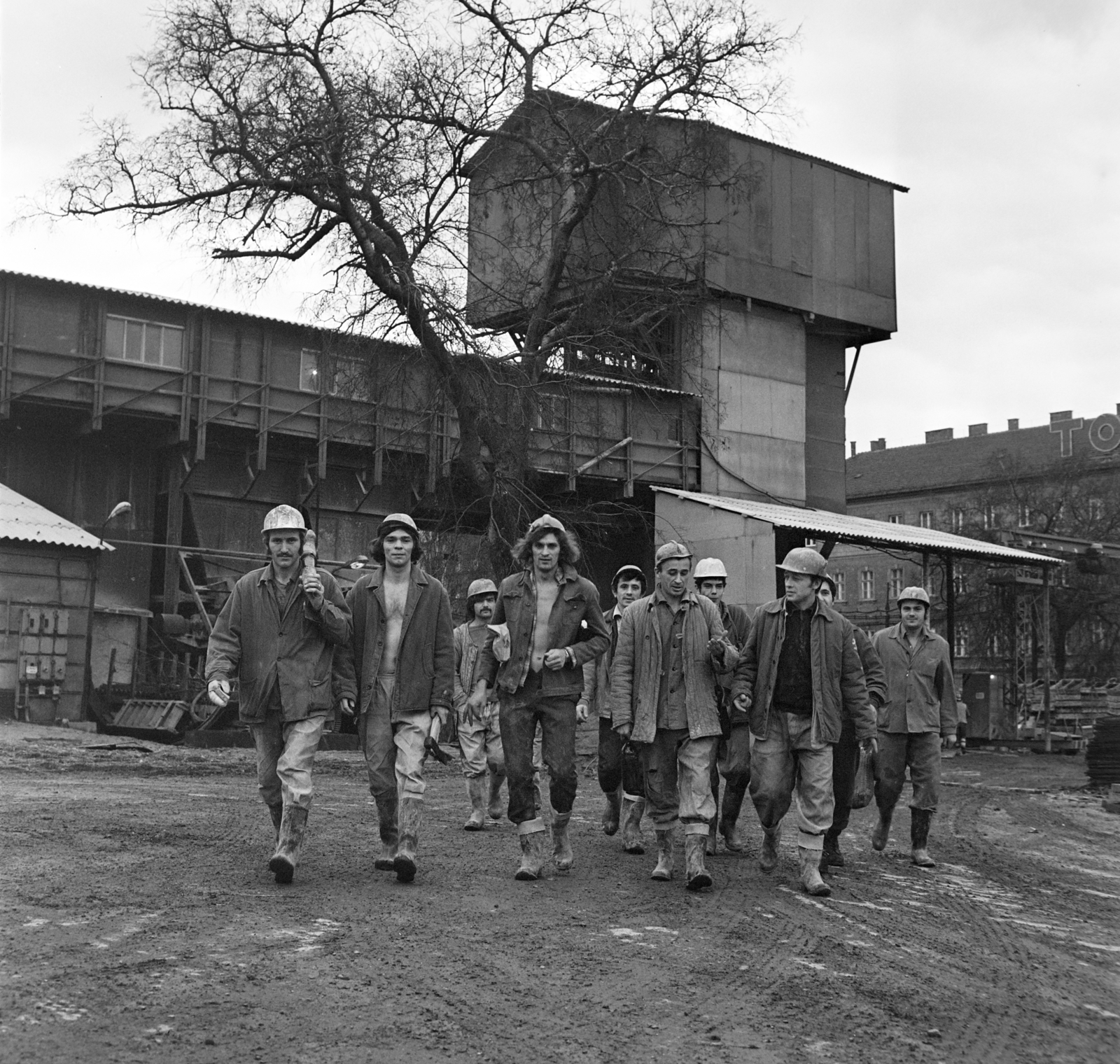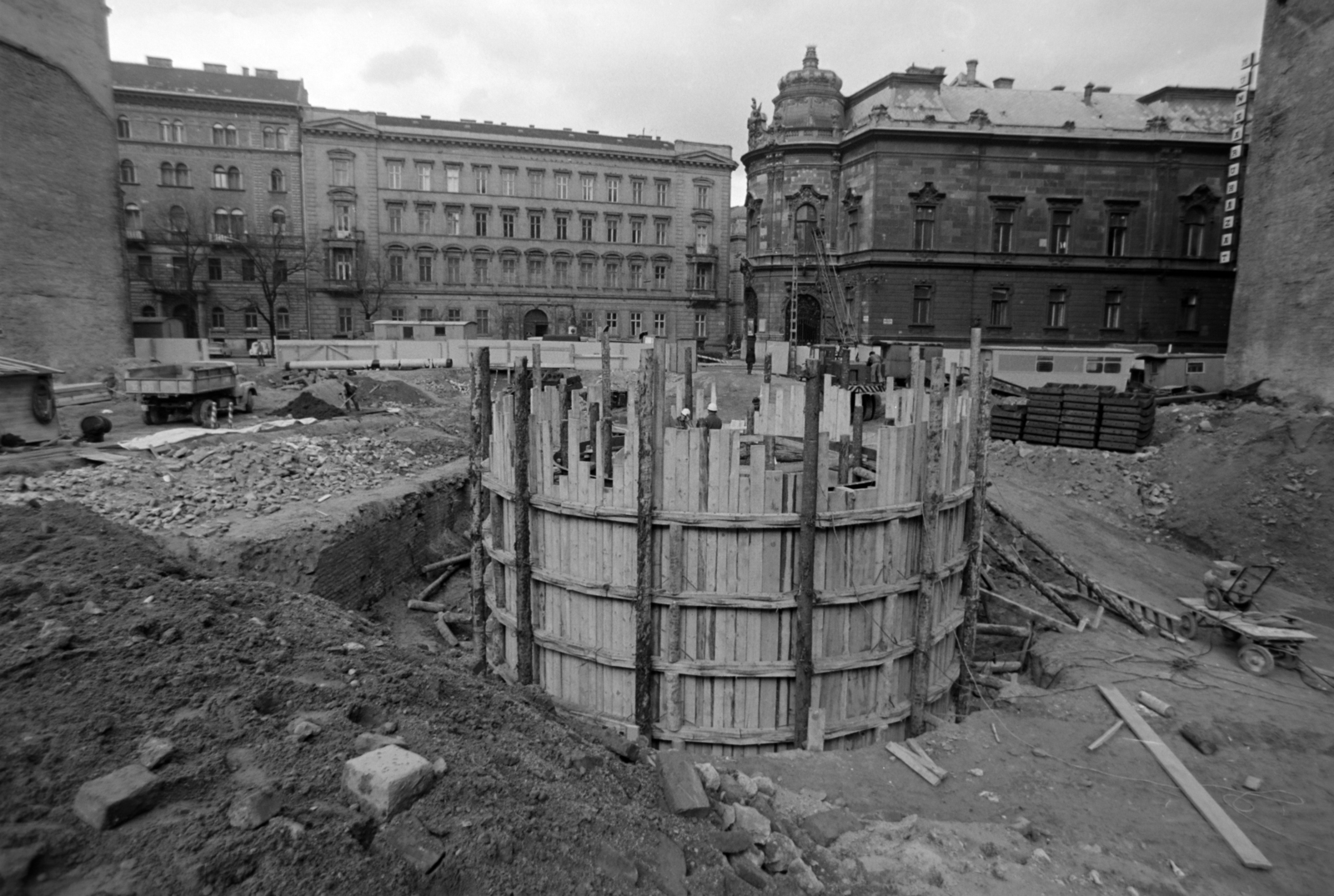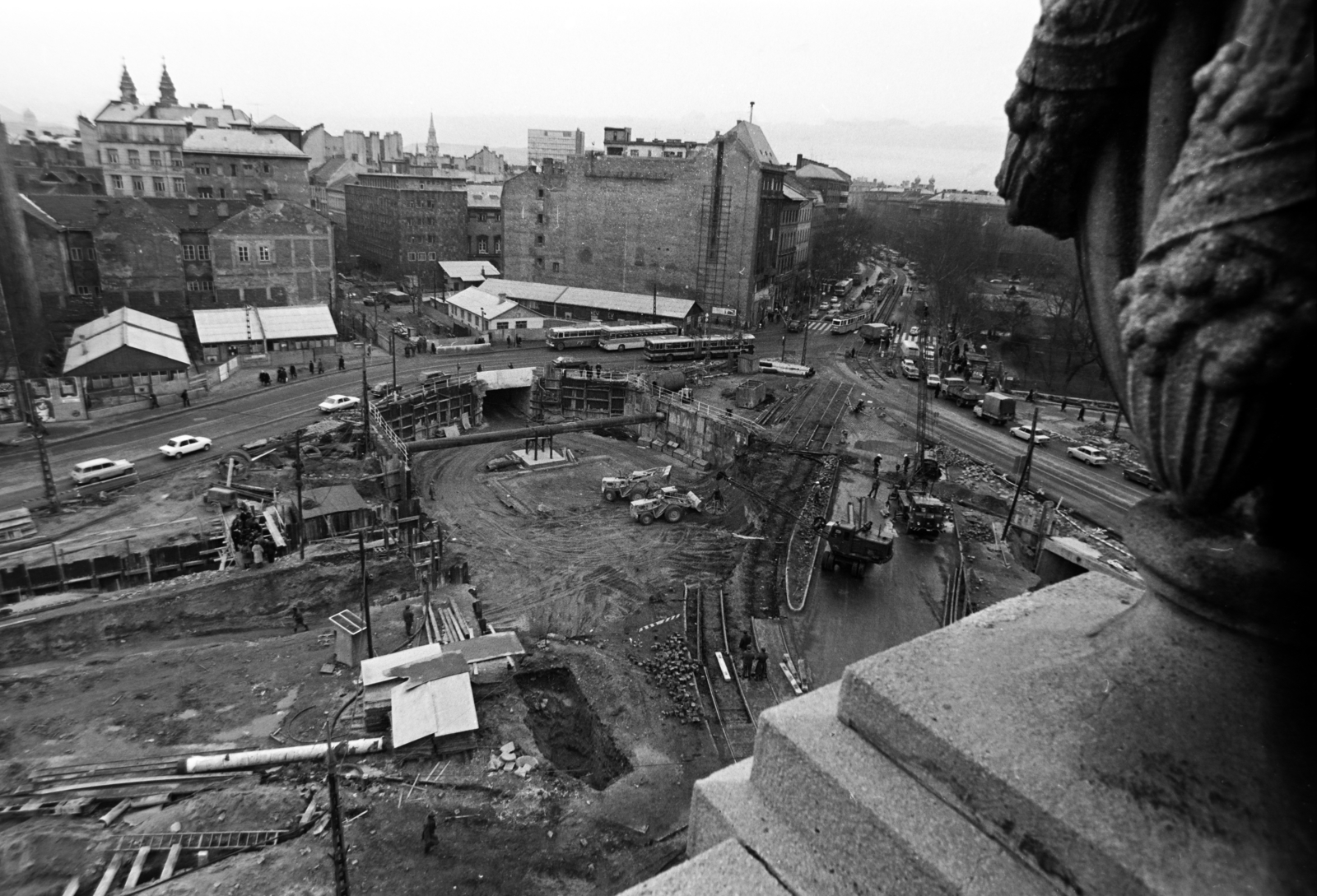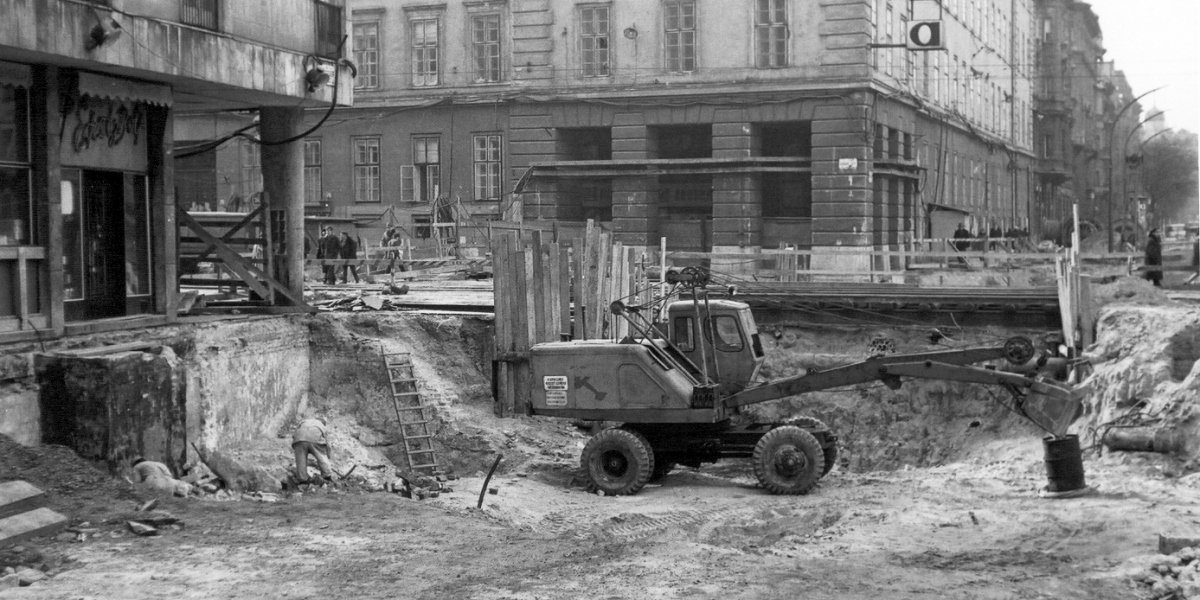The first underground in Budapest was the Millennium Underground Railway, which opened 125 years ago. Another line did not follow it for a long time. Although plans and ideas were born for the underground rapid transit, construction did not begin until the 1950s.
The first section of the East-West metro (due to a nearly 10-year forced economic break) was completed in 1970, and the construction of the second section was still in full swing when the construction of another north-south metro line in Budapest began.

The site office on Ludovika Square in 1974 (Photo: Fortepan/No.: 195455)
The third metro line was designed to be a little different from its predecessor: much longer, and the tunnel was not planned to be dug as deeply as it was not a nuclear shelter, and it did not cross the Danube. For the most part, it would have run under two main roads, Váci and Üllői Roads. In these sections, the tunnels were built with cut and cover techniques. Only the city centre section was bored.
The plans were made much earlier: the ideas had been shaped for decades, but construction begun with no final decision being made on where the line would end.

Plans for the Budapest underground network in 1974. (Photo: Fortepan/No.: 99235)
The government decided on the future start of construction when deciding to continue the previously abandoned East-West metro in 1963.
At the beginning of the construction, in 1971, the southern terminus of the line was planned for the intersection of Határ Road and Üllői Road, and the northern terminus of the line would be in Újpest, at István Square (today’s Szent István Square). On Metro 3, plans were for the stations to be located at an average distance of 790 metres from each other. The metro lines met at Deák Square, but in addition to Deák Square, Kálvin Square was also designed to facilitate transfers to a future metro. (In fact, during the construction of Metro Line 4, the tunnels were not routed where they were designed to go in the 1970s, but above Metro Line 3.)
Work was to be completed in four phases: first a 3.8-kilometre section between Nagyvárad Square and Deák Square, then to Határ Road in the south, and Árpád Bridge in the third phase, and Újpest in the fourth.

Metro construction on Üllői Road in 1974 (Photo: Fortepan/No.: 199015)
Construction began 50 years ago, on 6 May 1971, on Kun Béla Square (today’s Ludovika Square). A 21-meter-deep reinforced concrete pipe was built, and the installation of the first tunnel boring machine began, which was scheduled to be lowered in June to head toward Kálvin Square.
The first section, between Nagyvárad Square and Deák Square, was opened in 1976. During construction, the location of both terminals changed. Kőbánya-Kispest became the southern terminus instead of Határ Road, and in the north, the line ran to Újpest-Centre. At Határ Road, the station was designed to allow a branch line to head for Ferihegy at any time.
In the north, many ideas competed. When construction began, Esti Hírlap wrote on 8 May 1971:
“At City Hall, it was proposed to extend the north-south underground line to connect the 15th District into the rapid transit network. It is well known that the north-south metro is being built from István Square in Újpest, through the city centre to Határ Road in Kispest. But there has also been a suggestion that the new underground line will connect the Újpest and Kispest-Kőbánya railway stations, which would greatly help commuters.
Opinions were generally the same about the southern extension. One wing of the line would go to the Kispest-Kőbánya railway station, the other to the new centre in Kispest.”
According to the article, it was suggested that Újpalota should be connected to the underground network, not by the South Buda-Rákospalota line, already planned, but the northern wing line of the north-south line. However, in the end, the decision was made to build the metro to Káposztásmegyer, transitioning to the surface at some point. The Káposztásmegyer housing estate was also built with space for the metro. A small part of the surface section was completed in the north, but the metro does not go that far. The tracks are used by tram 14.
According to the plans, the complete construction would have been completed by 1985, but the economic situation intervened. The metro only reached Újpest in 1990.

Construction on Kálvin Square in 1975 (Photo: Fortepan/No.: 198802)
Today, the blue metro line is one of the essential transit corridors of Budapest. Metro Line 3, which includes a total of 20 stations, is used by a daily average of 626 thousand passengers in normal operation.
Cover photo: Construction of the underground at Ferenc Boulevard in 1971 (Photo: Fortepan/No.: 25643)





































Hozzászólások
Log in or register to comment!
Login Registration